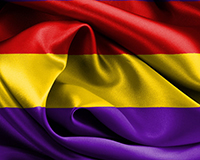Between 1907 and 1939 took place in Spain the origin of a scientific community promoted by the progressive and liberal sectors, through public policies, which created state institutions such as the National Institute of Sciences, The National Museum of Natural Sciences, the Biological Mission of Galicia, small laboratories and research institutes in the Council for the Extension of Studies and Scientific research and the Student Residence or societies and laboratories in the Institute of Catalan Studies.
The spirit of the Institución Libre de Enseñanza (Free Institution of Education) promoted science as a factor of progress and modernity, antagonistic of the conservative and catholic Spain. The Catalan Renaissance introduced initiatives in the same direction. A health reform was also started inspired by the European model based on municipal and provincial institutes of hygiene, a National institute and a Health School and a Hospital for Infectious Diseases.
The implication of the liberal state in public policies of science and health promotions had the social and political support, which increased during the Second Republic, but always had the opposition of the Catholic Church and the conservative sectors of Spanish society.
However, the result was the origin of a young, dynamic, well-structured, active scientific community, thanks to a pension policy for young researchers, who, in just two decades, sent nearly five hundred doctors, biologists, chemists, engineers, and mathematicians to the best laboratories, universities and research centres of Europe and the United States. A collective of Spanish scientists who start to join the international research networks and programmes.
This was the context in which Gregorio Marañon, Juan Negrín, Pío del Río-Hortega, Severo Ochoa, Francisco Jiménez Díaz, F. Grande Covián, R. Méndez, Blas Cabrera, Enrique Moles, Miguel Catalán, A. Pi Sunyer, Esteve Terradas, Juan Peset, José Puche, Teófilo Hernando, and many others were educated and trained. A collective led by Ramón y Cajal and that brought to Spain to Marie Curie, Albert Einstein or John. M. Keynes.
But this collective suffered a deep crisis between 1936 and 1939 due to the military coup, the Civil War, and the Franco’s regime. According to Santos Juliá, when the war finished there were 700.000 prisoners in Franco’s jails, two years later there were 280.000 imprisoned for political reasons. In addition, around 500,000 Republicans passed through concentration camps for political reasons. Francisco Guerra has made an inventory of the victims of Franco’s uprising, which includes names of more of 60 doctors killed in Andalucia, 40 in Aragón, 30 in Galicia and others in Castilla, more than twenty in Leon, a similar number in Navarra, five in Extremadura, and other cases in Asturias and the Basque Country. The military coup disrupted the functioning of laboratories, classrooms and hospitals and was a serious blow to the freedom values of the scientific community. Exile, imprisonment and the disqualification of doctors and scientists meant a tremendous drain for the Spanish society and an irreparable loss of intellectual power.
Barona Vilar, Josep Lluís
Ministeri de Ciència i Innovació











